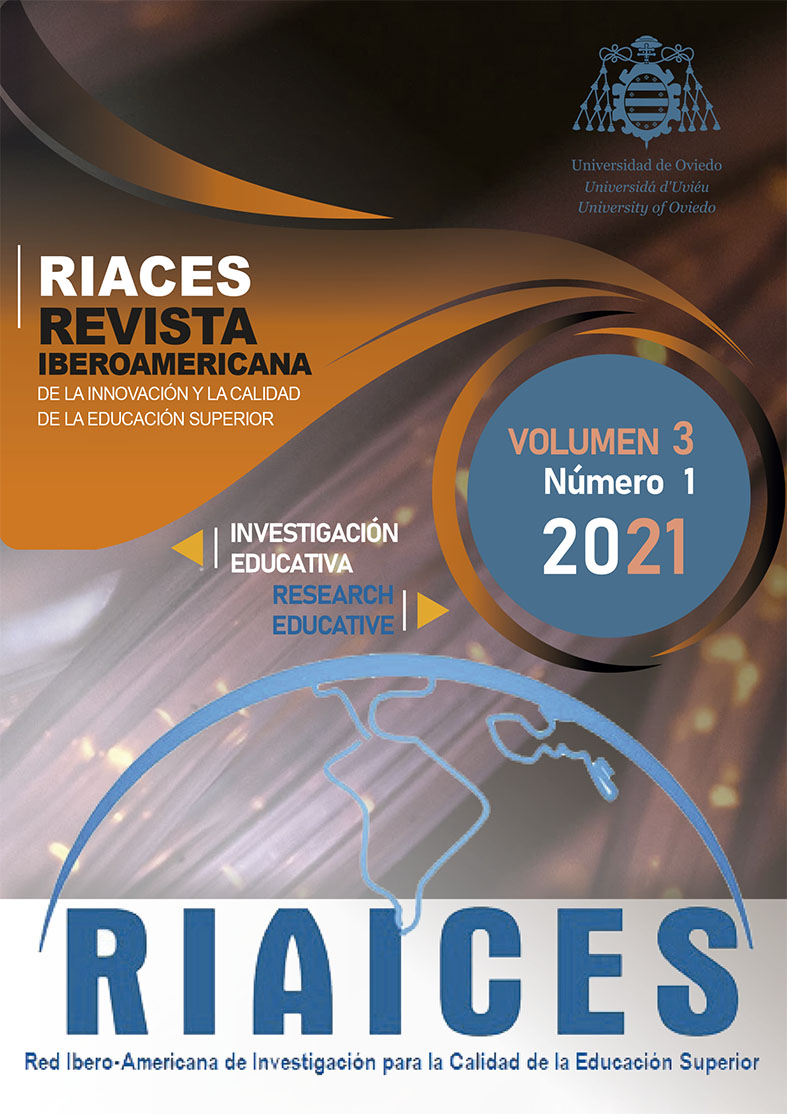Abstract
This article is about reflections derived from a research project that promotes improvement in aspects of education in a university area, Mexico sector, and which approaches from the different disciplinary groups, the appreciation from the emotional is emphasized as a cornerstone for educational improvement. The regulation and implementation of educational improvement models acquire greater accuracy, when supported or determined from proposals and empirical evidence, which in turn serve as platform modeling, promoting the official delineations of determination. Thus, the general appreciation of this emerging, in turn consolidates the growing interdisciplinary participation, which emphasizes the agreement that should permeate the development and reformation of the new statutes, arising from the proposed improvements to the various reference education programs regarding the dynamics of innovation that these provide, and doing a system that includes and promotes comprehensive training scenarios, being these guidelines, foster and stimulate precisely not only cognitive knowledge but also ... emotional.
References
Bar-On, R. (1997). Bar-On Emotional Quotient Inventory (EQ-i): Technical manual. Toronto, Canada: Multi-Health Systems.
Bar-On, R. (2000). Emotional and Social Intelligence: Insights from the Emotional Quotient Inventory. En R. Bar-On y J. D. A. Parker, The Handbook of Emotional Intelligence. Theory, Development, Assessment, and Application at Home, School, and in the Workplace (pp. 363-387). San Francisco, Ca: Jossey-Bass.
Bar-On, R., y Parker, J. D. A. (2000). The Bar-On Emotional Quotient Inventory EQ-I: YV: Technical manual. Toronto, Canadá: Multi-Health Systems.
Ciarrochi, J., Forgas, J.P. y Mayer, J.D. (Eds.) (2001). Emotional Intelligence in every day life. New York: Psychology Press.
Ciarrochi, J., Forgas, J.P. y Mayer, J.D. (Eds.) (2006). Emotional Intelligence in every day life. Philadelphia: Psychology Press/ Taylor and Francis.
Delors, J. (1996). La Educación encierra un tesoro. Informe a la UNESCO de la Comisión Internacional sobre la Educación para el siglo XXI. Madrid: Santillana-Unesco.
Elias, M., Zins, J., Weissberg, R., Frey, K., Greenberg, T., Haynes, N., Kessler, R., SchwabStone, M., y Shiver, T. (1997). Promoting social and emotional learning: Guidelines for educators. Alexandria, VA: Association for supervision and Curriculum Development.
Graczyk, P. A., Weissberg, R. P., Payton, J. W., Elias, M. J., Greenberg, M. T., y Zins, J. E. (2000). Criteria for Evaluating the Quality of School-Based Social and Emotional Learning Programs. En R. Bar-On y J. D. A. Parker, The Handbook of Emotional Intelligence. Theory, Development, Assessment, and Application at Home, School, and in the Workplace (pp. 391-410). San Francisco, Ca: Jossey-Bass.
Greenberg, M. T, Weissberg, R.P., O´Brien, M.U., Zins, J., Fredericks, L., Resnik H. y Elias, M.J. (2003). Enhancing school-based prevention and youth development through coordinated social, emotional, and academic learning, American Psychologist, 58, 466-474.
Goleman, D. (1996): Inteligencia Emocional. Barcelona, Kairós.
INEE, 2004. Minimum standards for education in emergencies. Paris: Inter- agencynetwork for Education in Emergencies.
Mayer, J.D.;Salovey,P. (1997): «What is emotional intelligence?», en P. Salovey Y D. Sluyter (Eds.), Emotional development and emotional intelligence: Educational implications. Nueva York: Basic Books.
Mayer, J.D., & Salovey, P. (1997). What is Emotional Intelligence? En P. Salovey & D.J. Learning Programs. En R. Bar-On y J. D. A. Parker, The Handbook of Emotional Intelligence.
Payton, J. W., Wardlaw, D. M., Graczyk, P. A., Bloodworth, M. R., Tompsett, C. J., & Weissberg, R. P. (2000). Social and emo¬tional learning: A framework for promoting mental health and reducing risk behavior in children and youth. Journal of school health, 70(5), 179-185.
Saarni, C. (1997). Emotional competence and self regulation in childhood. En P. Salovey & D. J. Sluyter, (1997), Emotional development and emotional intelligence (pp. 35-66). Nueva York: Basic Books.
Saarni, C. (2000). Emotional Competence. A Developmental Perspective. En R. Bar-On y J. D. A. Parker (Eds.), The Handbook of Emotional Intelligence. Theory, Development, Assessment, and Application at Home, School, and in the Workplace (pp. 68-91). San Francisco, Ca: Jossey-Bass.
Sacristán, G. (2001). Educar y convivir en la cultura global: las exigencias de la ciudadanía. Madrid: Ed. Morata.
Salovey, P., y Mayer, J. D. (1990). Emotional Intelligence. Imagination, Cognition and Personality. 9, 185-211.
Salovey, P., & Sluyter, D. J. (1997). Emotional Development and Emotional Intelligence. Educational Implications. Nueva York: Basic Books.
SEC, 2007. Programa Estatal de Educación en Sonora: Gob. del Edo. de Sonora.
Stoll, L.& Fink, D. (1999). Para cambiar nuestras escuelas. Octaedro.
Tharp, R. G.; Estrada, P.; Stoll Dalton, S. & Yamauchi, L. A. (2000/2002). Transformar la enseñanza. Excelencia, equidad, inclusión y armonía en las aulas y las escuelas. Barcelona: Paidós.
Villarasa, A. (1990). The ends educations. New Marías. 180, 37-40.

This work is licensed under a Creative Commons Attribution-NonCommercial-NoDerivatives 4.0 International License.
Copyright (c) 2020 Riaices

